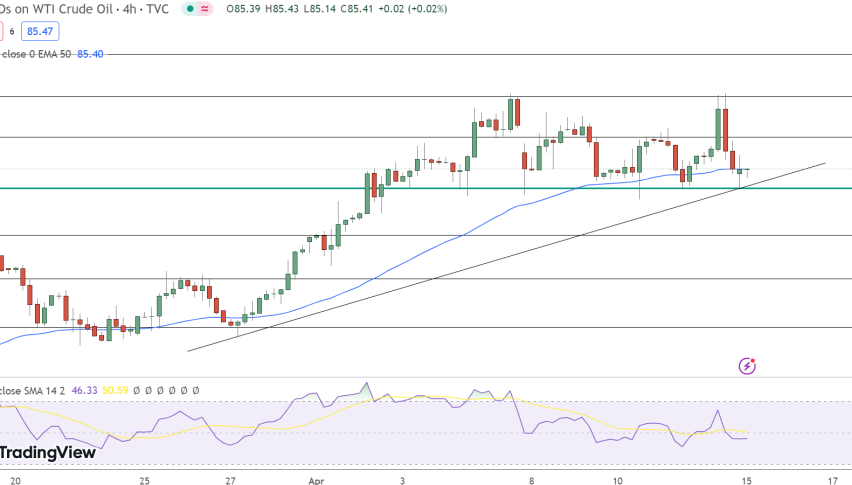WTI Crude Oil Prices fail to extend their Overnight Bullish Bias – A Fundamental Outlook!
During Wednesday’s Asian trading session, the WTI crude oil prices failed to extend their gains of the US session, picking up offers around the $ 41.50 level, mainly due to the downbeat inventory data from the American Petroleum Institute (API), which eventually fueled concerns over the global supply glut and undermined the crude oil prices. In the meantime, the resumption of Libyan production and fears of the weakening fuel demand, in the wake of rising numbers of COVID-19 cases, continues to dampen investor sentiment.
Apart from this, the losses in the crude oil prices were compunded by the uncertainty regarding whether OPEC and its allies will move forward with their plans to add 2 million barrels a day to the market, beginning in January.
On the contrary, the weakness of the broad-based US dollar, triggered by the market risk-on mood, has become the key factor that is helping to limit deeper losses in the crude oil prices. As a result, the market trading sentiment is being supported by the hopes that American lawmakers will reach an agreement on additional stimulus soon. Moreover, the risk-on sentiment was further bolstered by the continuous progress of the Brexit talks between the UK and the European Union (EU), which are also considered one of the key factors that is keepoing a lid on any additional losses in the crude oil prices. WTI Crude Oil is currently trading at 41.28 and consolidating in the range between 41.16 and 41.59.
On the data front, the API reported a 584,000-barrel build in the week ending October 16, vs. the forecast of the 1.9-million-barrel draw and the previous week’s draw of 5.422 million barrels. This, in turn, fueled concerns about the oversupply, at a time when the numbers of coronavirus cases are rising globally, which is likely to halt the recovery of the fuel demand. Moving on, investors will keep their eyes on data from the US Energy Information Administration, which is due later today.
Moreover, the bearish bias surrounding the crude oil prices could also be associated with the latest reports suggesting the resumption of Libyan production, which is pumping more oil into a market that is already full. Apart from this, the crude oil demand continues to weaken, as some major countries in Europe have re-imposed restrictive measures, including lockdowns, in an effort to control the latest rise in the number of COVID-19 cases in the region. As per the latest Johns Hopkins University data report, there were approximately 40.7 million cases globally as of Oct. 21. Elsewhere, the crude oil gains were capped by the OPEC + proposal to ease production cuts – currently amounting to 7.7 million barrels per day (BPD) – to roughly 5.7 million BPD, in January, which has increased fears of an oversupply, thereby contributing to the losses in oil.
On the contrary, the prevalent upbeat market tone, backed by the hopes for the economic stimulus package in the United States and other countries, has become the key factor that is limiting deeper losses. As per the latest report, the White House and the Democrats in the US Congress are getting nearer to reaching an agreement on a new coronavirus relief package. These hopes were further boosted after President Donald Trump showed his readiness to up the price tag for the measures.
It is worth mentioning that an end to the long-lasting battle between the Republicans and the Democrats seems to be in sight, after President Donald Trump said that he was willing to accept a stimulus package with a larger price tag, saying, “I want to do it even bigger than the Democrats.”
Besides this, the upbeat market mood was further bolstered after the positive remarks by Chicago Federal Reserve Bank President Charles Evans. “The current increase in US COVID-19 cases will not damage the recovery too much, and we remain “reasonably optimistic” that unemployment will drop to 5.5% by the end of 2021.” In the meantime, the investors are gaining momentum from the Brexit talks between the UK and the European Union (EU). These hopes were fueled after both sides pleaded with the other for compromise, in order to save the fast-deteriorating negotiations.
As a result, the broad-based US dollar failed to gain any positive traction, edging lower on the day, mainly due to the risk-on market sentiment. Moreover, the losses in the US dollar could also be associated with the on-going optimism that the US Congress will pass the next stimulus measures before the presidential election on November 3, which tends to undermine the safe-haven US dollar. The losses in the greenback are keeping the oil prices higher, as the price of oil is inversely related to the price of the US dollar. Meanwhile, by 9:52 PM ET (1:52 AM GMT), the US Dollar Index, which tracks the greenback against a range of other currencies, had dropped by 0.15%, to 92.963 .
Looking ahead, the market traders will keep their eyes on updates concerning the relief package for fresh direction. In the meantime, the official figures from the Energy Information Administration (EIA), which are expected to drop from the previous -3.818M readout to -0.24M, will also be key to watch. All in all, the updates surrounding the Brexit, the coronavirus and the US-China tussle have not lost any significance. Good luck!












